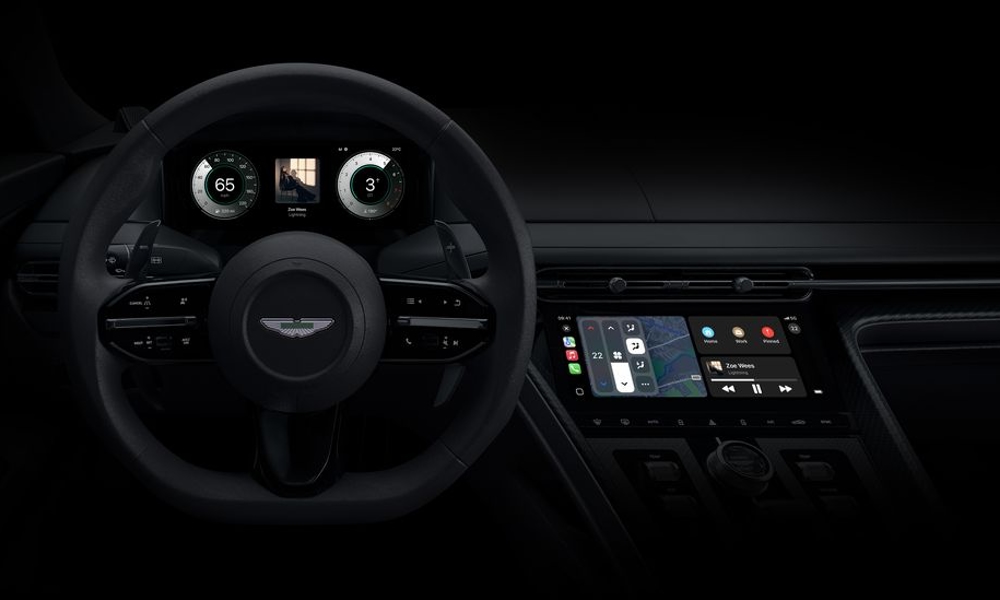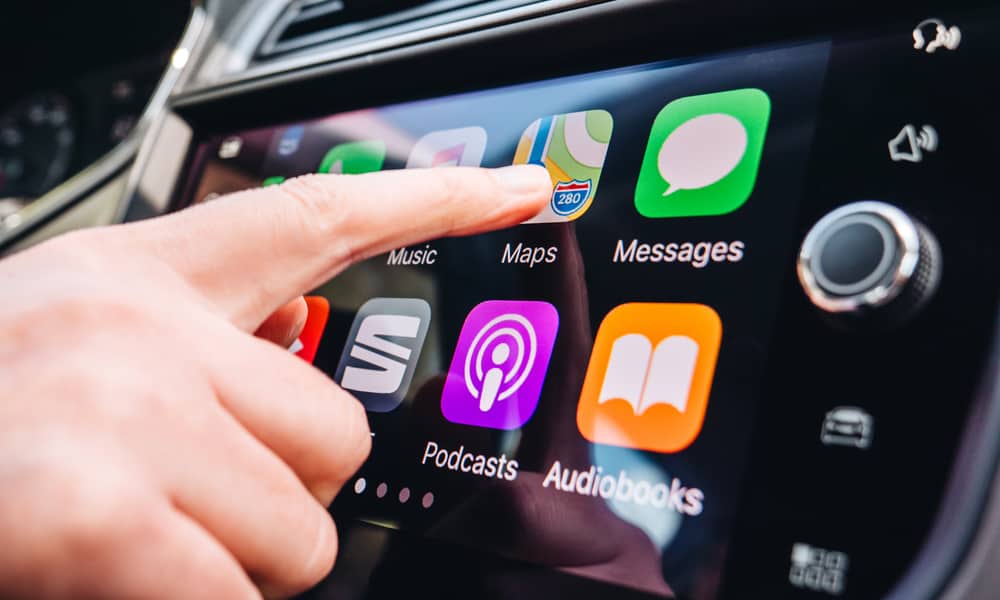DoJ Lawsuit Bafflingly Cites Apple’s CarPlay as Anticompetitive

Toggle Dark Mode
This week, the United States Department of Justice filed a comprehensive 88-page lawsuit against Apple, accusing the company of maintaining an illegal monopoly in the smartphone market to drive up prices and stifle competition.
The lawsuit was the culmination of a five-year investigation into Apple’s allegedly anticompetitive practices, during which Justice officials appear to have left no stone unturned in exploring every possible area in which the company could be using both its technologies and agreements to lock customers and partners into the iPhone ecosystem.
Although many onlookers didn’t think the DoJ would pursue Apple on all these fronts, it appears it hasn’t pulled any punches. Nearly every feature of the iPhone has come under attack, from the obvious battlegrounds like the App Store to less contentious areas like the Apple Watch and the ability of third-party apps to send SMS messages.
The DoJ may simply be throwing everything at the wall to see what sticks — a common tactic in many lawsuits — but some of its claims are specious at best.
For example, following the European Commission’s crackdown on the App Store, few would argue that US regulators should be taking a closer look at Apple’s practices on this side of the pond. Claims about Apple’s restrictions on cloud gaming services and the locked-down NFC chip also have merit and have been the subject of previous skirmishes with regulators.
However, the DoJ’s concern about Apple blocking “super apps” seems spurious, and its take on third-party messaging apps is at least confusing and awkward. It blames Apple for a lack of interoperability that isn’t really its fault. Yes, Apple could release iMessage for Android, but it wouldn’t be a step toward universal messaging as folks on the other end would still need to install that app.
While there may be a few valid concerns hidden in the messaging mess, these seem to mainly focus on things that most users aren’t likely to care too much about, such as allowing third-party apps like WhatsApp to be able to send SMS messages. Apple certainly could and probably should do this, but it’s hard to see that as something that enforces Apple’s market dominance.
Enter CarPlay…
Those are just the tip of the iceberg, though. We weren’t kidding when we said the DoJ is going deep. In some cases, it’s in entirely uncharted waters. Buried away on page 48 of the lawsuit is this little gem about how Apple is using CarPlay to dominate the auto industry:
Apple’s threatened dominance over the automotive industry goes well beyond the Apple Wallet and Apple’s demands on car makers to allow innovative products and services on the iPhone. Apple’s smartphone dominance extends to CarPlay, an Apple infotainment system that enables a car’s central display to serve as a display for the iPhone and enables the driver to use the iPhone to control maps and entertainment in the car. Like the smartphone market, infotainment systems are increasingly considered must-have capabilities in newer vehicles. After leveraging its smartphone dominance to car infotainment systems, Apple has told automakers that the next generation of Apple CarPlay will take over all of the screens, sensors, and gauges in a car, forcing users to experience driving as an iPhone-centric experience if they want to use any of the features provided by CarPlay.
In the latter part of that paragraph, the lawsuit clearly refers to Apple’s new CarPlay 2.0, which promises to integrate much deeper into supported vehicles. However, it also demonstrates that somebody at the DoJ doesn’t entirely understand how CarPlay 2.0 will work or how much control the automakers still have over the experience.
First up is the fact that the next generation of CarPlay is available on so few vehicles that it’s laughable to suggest that Apple is trying to control anybody. Carmakers can take it or leave it, and most appear to be leaving it. When Apple announced CarPlay in June 2022, it claimed to be a dozen or more automakers to implement the technology, but most were quite lukewarm to the technology at best. Only BMW, Volvo, Polestar, and Mercedes-Benz even admitted that they were considering adopting the new CarPlay system. As of December, when Apple promised the first cars would be announced, only Porsche and Aston Martin are on board.
That’s hardly indicative of Apple using CarPlay to dominate the automotive industry. Maybe the luxury automotive industry, but one of the biggest US automakers, General Motors, is abandoning CarPlay and going in the opposite direction with its own infotainment system — an innovation that clearly isn’t being stifled by Apple’s iPhone “monopoly.”
Here too, Apple leverages its iPhone user base to exert more power over its trading partners, including American carmakers, in future innovation. By applying the same playbook of restrictions to CarPlay, Apple further locks-in the power of the iPhone by preventing the development of other disintermediating technologies that interoperate with the phone but reside off device.
US Justice Department
While the CarPlay we all know today is available on the vast majority of cars on the market, there is also zero lock-in behind this technology. While CarPlay has the lead, most of these vehicles also support Android Auto, and carmakers are not forced in any way to choose one or the other. If a vehicle has better CarPlay support (e.g., wireless CarPlay) or doesn’t support Android Auto, that’s on the manufacturer, not Apple. If Apple were contractually “encouraging” carmakers to implement CarPlay exclusively, the DoJ might have a point, but there’s been no evidence of that.
There’s also zero friction in switching from CarPlay to Android Auto. While I use CarPlay entirely for personal use, I regularly test and review Android Auto adapters with my vehicle. Not only is it effortless to switch between CarPlay and Android Auto, but I can even have both my iPhone and Pixel connected at the same time and toggle between them with about three taps on the screen.
If I’ve missed using my iPhone while driving with Android Auto, it’s because I like CarPlay’s interface better, not because Nissan or Apple are forcing me to use it. Likewise, if I use CarPlay with my vehicle instead of a Bluetooth audio connection for music and calls — something that’s still entirely possible with my vehicle — it’s simply because Nissan’s infotainment system is so pathetically bad that there’s no comparison.
In fact, Nissan’s onboard ProPilot navigation system has an advantage over CarPlay; it can show turn-by-turn directions on my dashboard screen and windshield heads-up display. That’s a neat trick that might be enough to convince me to use the built-in nav if the maps themselves didn’t look like they were beaten into shape with an ugly stick.
This is the point that actually gets to the core of this case. As Judge Yvonne Gonzalez-Rogers famously said in the Epic Games case, “Success is not illegal.”
A company isn’t a monopoly because it’s good at what it does. I use CarPlay because it’s good, not because I must. I’ve tried Nissan’s ProPilot, and I’ve tried Android Auto. I prefer CarPlay, not because I use an iPhone, but because Apple Maps is lovely and uncluttered, and Nissan’s interface looks like it was drawn by a two-year-old on a sugar rush. It’s the only downside of an otherwise excellent vehicle, but thanks to CarPlay, I don’t need to worry about it. However, the same would be true if I were using an Android smartphone, as Android Auto is also leaps and bounds ahead of what Nissan offers.
If anything, CarPlay should encourage automakers to do better if they want folks to use their infotainment systems. Apple certainly isn’t blocking innovation in this area — at least not deliberately. If anything, Apple has done such a great job with CarPlay that automakers have given up, recognizing that most folks will ignore their infotainment systems and plug in their smartphone. However, the same can be said about Google, where Android Auto is also leaps and bounds ahead of what most carmakers have built into their cars.
That’s likely one of the reasons that GM has decided to ditch CarPlay and Android Auto support entirely — to force its customers to use its own infotainment system. Either way, none of this is on Apple or Google unless the DoJ seriously believes smartphone markers should stop innovating and “dumb down” their in-car interfaces to give car infotainment systems a fair shake.








